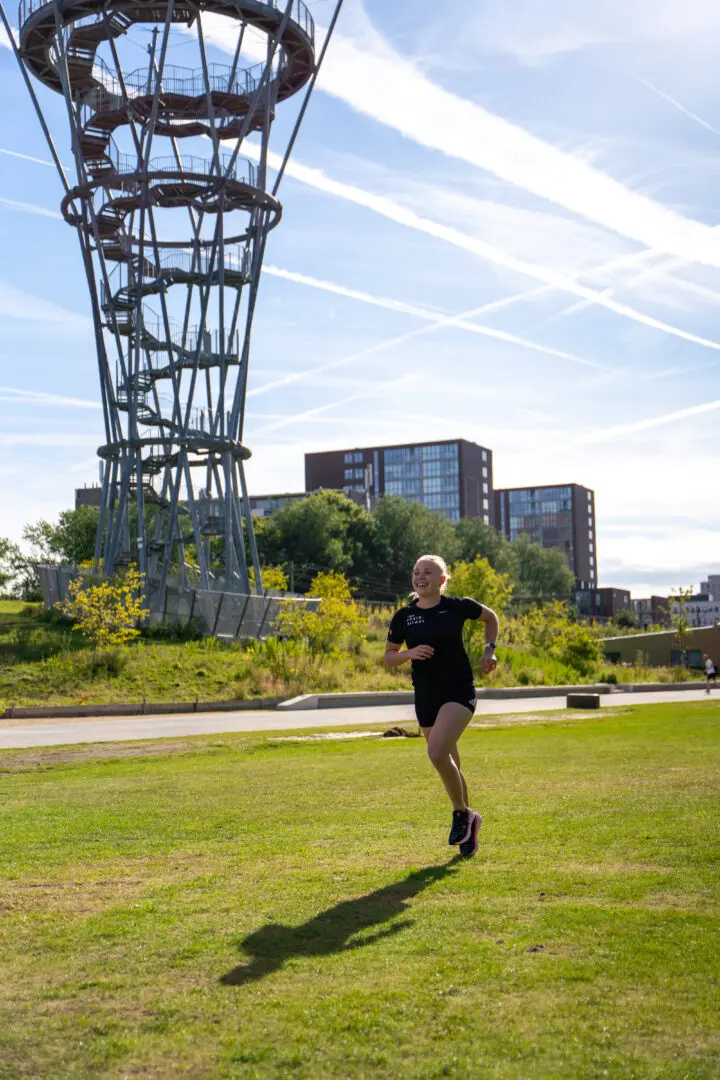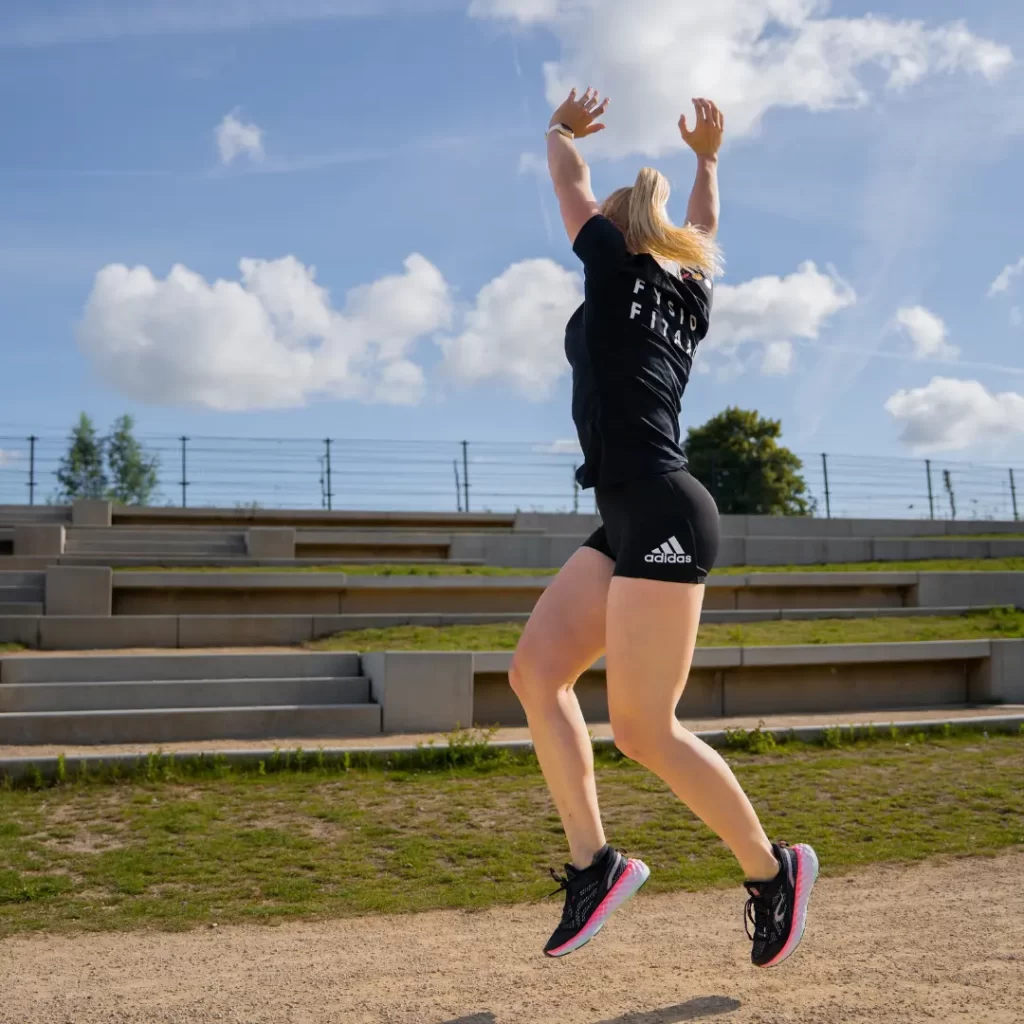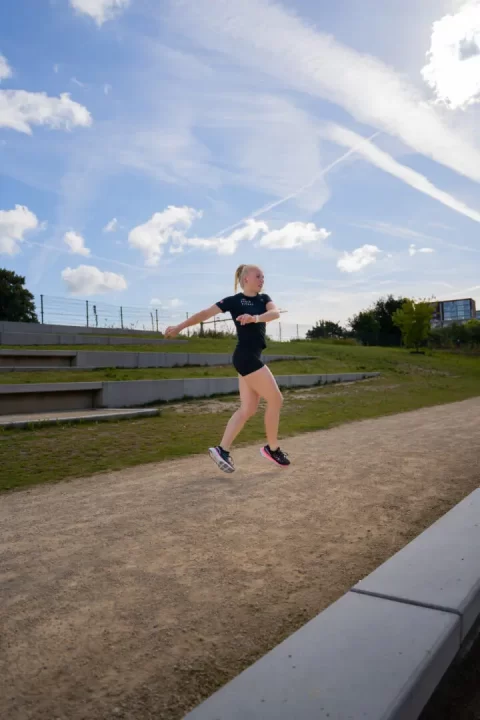Ground contact and running. How does that work?
During running, ground contact is of great influence. Ground contact leads to a landing moment, but also to a new push-off during running. If you want to run faster or more efficiently, it is wise to look at your running technique/style. This can be done through image analysis, but also with the help of an expert or a (sports) physiotherapist. After all, each landing catches two to three times your body weight. If you have an incorrect running technique, this can have consequences for your body, increasing the risk of injuries. In this blog, we will take a closer look at the running principle: ground contact time. But also what effect this has on your running performance. As you may know, your performance during running depends on several factors. These often include Vo2max (maximum oxygen uptake), lactate tolerance (acidification) but also, for example, external factors such as weather conditions and footwear. We too think that these few examples are certainly relevant when it comes to running performance, but would like to add another important pillar in this blog; ground contact.

What is ground contact time?
Ground contact time means the time between the land and push-off moment when your feet make contact with the ground. Looking at elite athletes, the ground contact time is as short as possible. Measured in milliseconds, a top athlete has a ground contact time of less than 300msec. Depending on what type of runner you are, the shorter your ground contact time will be. The moment of landing and lifting the foot again also plays into the speeds top athletes can handle (running pace). By lifting the feet again quickly, this in turn affects the next movement (the push-off followed after landing), so a runner does not create a braking movement while running. Through data (measured with running watches, for example), you can find out what your ground contact time is (regardless of what type of training). Now, it is plausible that an experienced short-distance runner (maximum 800m) has a shorter ground contact time than an experienced marathon runner (42,195km) because they have a totally different energy distribution but also use a totally different energy system for this. Ground contact time plays a role in every runner and has a different impact on every runner.

Improving running performance
If you are an avid runner yourself, you probably know that most runners are fairly performance-oriented. Examples include extending distance (kilometres covered per run/per x period) or the time it takes to cover a certain distance (pace). Ground contact time (GCT)=time in which the foot has contact with the surface) turns out to be an important parameter when it comes to performance during running. Besides the fact that optimising ground contact time can contribute to a higher running speed, running efficiency also increases. Da means that it takes our body less work to perform the activity than when we have a greater ground contact time.
An example of this is simply accelerating from 8km/h to 10km/h while running. The moment you initiate such an acceleration, you may notice that the time in which you have ground contact decreases but your stride length will increase. We know that even though different people can run at the same speed, their ground contact time can differ between them, but also that the fastest runners generally have the least long GCT. This implies that training for a reduced GCT might have a positive effect on your performance while running. The rationale behind this is that you actually only progress during gliding moments, and thus long ground contact moments reduce speed. Experienced runners have been found to have a GCT of less than 300 milliseconds per stride.
How do you reduce your ground contact time?
Fortunately, based on studies, we can say something about this too! In fact, three factors seem to mainly influence your GCT, namely; the ability to generate a lot of force on the ground at high speed, stiffness in the leg during the footstrike and biomechanical aspects such as foot position and body centre of gravity during the footstrike. Being able to increase speed and generate a lot of force helps create (forward) speed in our running pattern. In addition, stiffness in the leg at the footstrike provides the ability to store and release more energy at the push-off. Furthermore, we know that foot position and body centre of gravity affect the efficiency of our running pattern. If we place our foot too far forward (too long stride length) or if we place our body's centre of gravity too far forward/back, we are, as it were, a brake in our movement pattern. Because we thereby slow ourselves down, the GCT will always increase but also the amount of energy we need in walking.
The torso has a big influence on your ground contact time. Running with an upright running posture (chest forward, shoulders back) can influence your running technique. Your hip and gluteal muscles greatly influence your forefoot landing. The goal of good running technique, is to place the feet below the body's centre of gravity (time-efficient). When you place your feet in front of the body's centre of gravity, your entire body must first cross this point before a new push-off moment can occur.
The gluteal and hip muscles catch a lot during running. For this reason, we therefore recommend strength training that will make these muscles powerful enough to cushion the running landing, time after time. Some example exercises for the gluteal and hip muscles are: lunges, squats, bulgarian split squats, etc. Strength training is one way to prevent running injuries. Some exercises that can help you do this and also help you have a short ground contact time are listed below.

What can you do to improve running performance and how can you best influence it?
Ultimately, improving performance often comes down to training and quality of movement, so here too. Studies have shown that heavy strength training and plyometric exercises lend themselves very well to increasing leg stiffness during running. To give an example, in a study where multiple heavy sets of squats were performed 4x a week, hefty positive results were measured on running efficiency and distance-time ratio. So this gives you several options. You can choose to hit the gym now and start working hard on strength training and plyometric exercises such as box jumps, etc. Another option is to add plyometric exercises to your running training or regularly finish your training with some big sprints to increase strength while running.
Another possibility is to improve the quality and efficiency of movement by paying attention to foot placement. Indeed, a Japanese study during a half-marathon showed that there is a strong correspondence between foot placement and ground contact time. Thereby, it appears that the midfoot strike is more effective and greatly reduces GCT compared to the heelstrike landing and thus can improve running times.
Biomechanics during running
At the moment of landing, your body absorbs the energy of that force. Your knees, for example, bend (flex) to absorb the impact of the landing and to slow the body's centre of gravity'. Ground contact time has a lot to do with biomechanics of the body. For instance, in some runners, you see a certain running pattern that limits good performance because energy is absorbed. This can be due to a 'trendelenburg' pattern (sagging of the hips), an unstable upper body (swaying posture) or by the knees turning inwards when landing (kneeing-in phenomenon). Now, the aforementioned factors should not so much be labelled 'wrong', but can potentially lead to injuries or increase the likelihood.
The perfect running technique
There is no such thing as a perfect running technique. Every runner runs in their own way. However, there are factors that influence your running performance and minimise the risk of injury. Now, there is also no scientific evidence describing that your own running technique can lead to injuries. Now, your running technique is partly innate, but you can of course influence it through running training, feedback (e.g. filming) and being conscious (explicit) about it. Good running technique can eventually lead to complaints, depending on numerous factors, but terrible running technique can also lead to no complaints again. If you are used to always running with a kneeing in pattern (turning the knees inwards while landing), but this never leads to complaints, why would you want to change it anyway? Provided someone does have complaints, it makes sense to 'tinker' a bit with someone's running pattern, but if you have no complaints and run at peak performance, why tinker?
Also see 'Which running schedule suits you?‘.

Related complaints


Hamstring complaints in runners
Hamstring complaints are common among runners. Pain and loss of strength are common symptoms in hamstring injuries.
